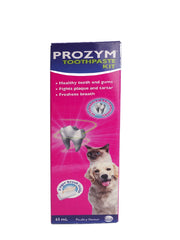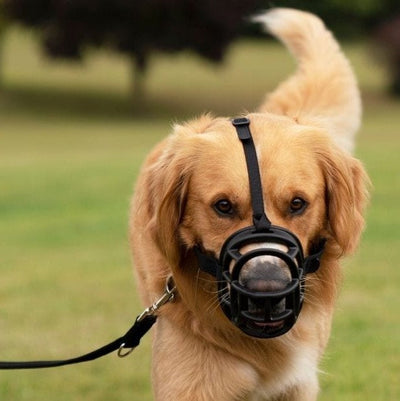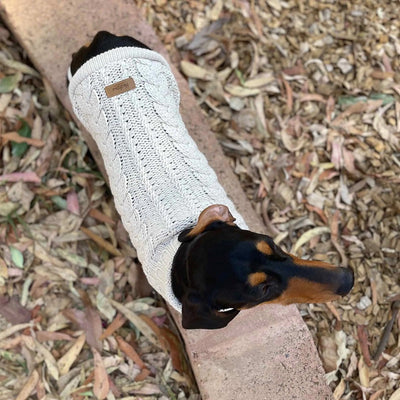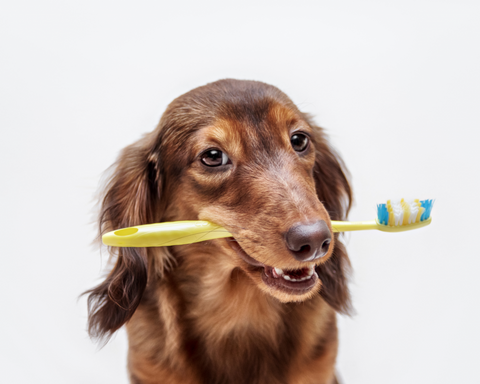
Do you want to keep your four-legged friend's teeth and gums healthy and sparkling? Look no further! In this guide, we'll take you through the tried and tested techniques for maintaining your dog's oral hygiene. Just like humans, dogs can suffer from dental problems that can lead to discomfort, pain, and even serious health issues. The Australian Veterinary Association (AVA) reports that 4 out of every 5 dogs over the age of 3 have some degree of dental disease. But fear not, because with the right knowledge and tools, you can ensure your canine companion has a healthy and happy smile. From brushing techniques to dental treats and regular check-ups, we'll cover it all. You'll learn how to establish a dental care routine, choose the right products, and overcome common challenges. Whether you have a puppy or an older dog, this comprehensive guide will provide you with the tips and tricks you need to keep your furry friend's oral health in top shape. So let's dive in and start barking up the right tree for your dog's dental care!
Importance of oral hygiene for dogs
Maintaining good oral hygiene for dogs is crucial for their overall health and well-being. Oral problems can not only cause discomfort and pain but can also lead to more serious health issues if left untreated. Dogs are prone to dental problems such as plaque buildup, tartar, gum disease, and tooth decay, just like humans. Ignoring their oral health can result in infections, tooth loss, and even organ damage. By prioritising your dog's oral hygiene, you can prevent these issues and ensure they lead a happy and healthy life. Regular dental care not only improves their quality of life but also helps prevent expensive veterinary bills down the line. So, let's explore the common dental problems in dogs and how to recognise them.
Common dental problems in dogs
Dogs can experience a range of dental problems, and it's important to be aware of the signs and symptoms. One of the most common issues is plaque buildup, which occurs when bacteria combine with food particles and saliva to form a sticky film on the teeth. If not removed, plaque hardens into tartar, leading to gum irritation and inflammation. This can progress to periodontal disease, a serious condition that affects the tissues supporting the teeth. Dogs suffering from periodontal disease may experience bad breath, bleeding gums, loose teeth, and difficulty eating. Other dental problems in dogs include fractured or broken teeth, oral tumors, and oral infections. Recognising these issues early on is crucial for effective treatment and prevention. Now that we understand the importance of maintaining good oral hygiene and the common dental problems in dogs, let's move on to identifying the signs of dental problems.
Signs of dental problems in dogs
Identifying dental problems in dogs can be challenging as they are experts at hiding pain and discomfort. However, there are certain signs you can look out for to determine if your furry friend is experiencing oral health issues. Bad breath is often the first indicator of dental problems in dogs. While it's normal for dogs to have a slight odour to their breath, persistent and foul-smelling breath can indicate dental issues. Red and swollen gums, bleeding gums, and visible tartar buildup on the teeth are also signs of dental problems. Additionally, if your dog is experiencing pain while eating, dropping food from their mouth, or showing reluctance to chew on toys or bones, it may be a sign of dental discomfort. Changes in behaviour, such as increased irritability or decreased appetite, can also be linked to dental problems. Regularly checking your dog's mouth and observing their behaviour will help you catch any dental issues early on. Now that we know how to identify dental problems, let's move on to the most important aspect of oral hygiene for dogs – brushing their teeth.
Brushing your dog's teeth: step-by-step guide
Brushing your dog's teeth is the gold standard when it comes to maintaining their oral hygiene. It not only helps remove plaque and tartar but also prevents gum disease and tooth decay. However, getting your dog accustomed to having their teeth brushed can be a challenge. With patience and the right technique, you can make this a positive experience for both of you. Here's a step-by-step guide to brushing your dog's teeth:
1. Start slow: Introduce your dog to the toothbrush and toothpaste gradually. Let them sniff and lick the toothpaste to get accustomed to the taste.
2. Choose the right tools: Use a toothbrush specifically designed for dogs, with soft bristles and a long handle for easy reach. Dog-friendly toothpaste is essential, as human toothpaste contains ingredients that can be harmful to dogs.
3. Get in position! Find a comfortable spot where you and your dog can both relax. You may need to restrain your dog gently or have someone assist you if they are particularly fidgety.
4. Lift the lip: Gently lift your dog's lip to expose their teeth and gums. Start with the front teeth and gradually work your way to the back.
5. Brushing technique: Hold the toothbrush at a 45-degree angle and use small circular motions to brush the teeth and gum line. Pay extra attention to the gum line, as this is where plaque and tartar tend to accumulate.
6. Reward and praise: After each successful brushing session, reward your dog with a treat or praise to build positive associations with tooth brushing.
7. Frequency: Aim to brush your dog's teeth at least 2-3 times a week. However,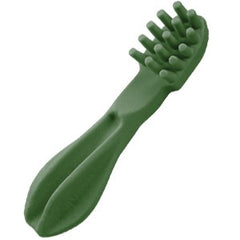 daily brushing is ideal for optimal oral health.
daily brushing is ideal for optimal oral health.
Remember, consistency is key when it comes to brushing your dog's teeth. With time, patience, and positive reinforcement, your dog will become comfortable with this routine. Now that we've covered the step-by-step guide to brushing your dog's teeth, let's discuss the importance of choosing the right toothbrush and toothpaste for your furry friend.
Choosing the right toothbrush and toothpaste for your dog
 When it comes to choosing the right toothbrush and toothpaste for your dog, several factors need to be considered. The toothbrush should have soft bristles to avoid irritating the gums and a long handle for easy maneuverability. Look for a toothbrush specifically designed for dogs, as their mouth structure is different from humans. Dog-friendly toothpaste is equally important, as it should be safe for ingestion and appealing to your dog's taste buds. Avoid using human toothpaste, as it often contains fluoride and other ingredients that can be toxic to dogs. Instead, opt for toothpaste formulated for dogs, which comes in flavours like chicken, beef, or peanut butter. This will make the brushing experience more enjoyable for your furry friend. Additionally, seek recommendations from your veterinarian to ensure you choose the most suitable products for your dog's specific needs. Now that we know how to choose the right toothbrush and toothpaste, let's explore alternative oral hygiene options for dogs.
When it comes to choosing the right toothbrush and toothpaste for your dog, several factors need to be considered. The toothbrush should have soft bristles to avoid irritating the gums and a long handle for easy maneuverability. Look for a toothbrush specifically designed for dogs, as their mouth structure is different from humans. Dog-friendly toothpaste is equally important, as it should be safe for ingestion and appealing to your dog's taste buds. Avoid using human toothpaste, as it often contains fluoride and other ingredients that can be toxic to dogs. Instead, opt for toothpaste formulated for dogs, which comes in flavours like chicken, beef, or peanut butter. This will make the brushing experience more enjoyable for your furry friend. Additionally, seek recommendations from your veterinarian to ensure you choose the most suitable products for your dog's specific needs. Now that we know how to choose the right toothbrush and toothpaste, let's explore alternative oral hygiene options for dogs.
Alternative oral hygiene options for dogs
Brushing your dog's teeth is undoubtedly the most effective way to maintain their oral hygiene. However, it may not always be feasible, especially if your dog is resistant or has certain health conditions. In such cases, alternative oral hygiene options can supplement their dental care routine. Incorporating dental treats and toys can provide additional oral care benefits. Chewing on specially designed dental chews or toys helps remove plaque and tartar, massage the gums, and stimulate saliva production.
Greenies Dental Chews for dogs & cats have been formulated by vets, nutritionist's and scientists to create a treat that cleans your pets teeth as they chew! This dental care range of treats is effective at removing and preventing plaque build up from a range of easy to digest natural ingredients.
These options can be a great addition to your dog's oral hygiene routine, especially when brushing is not possible. Now that we've explored alternative options, let's move on to the importance of regular dental check-ups and professional cleanings.
Regular dental check-ups and professional cleanings
While home dental care is essential, it should be complemented with regular dental check-ups and professional cleanings. Just like humans, dogs require professional dental care to ensure their oral health is in optimal condition. Your veterinarian will perform a thorough examination of your dog's teeth and gums during these check-ups. They may also conduct dental cleanings to remove stubborn plaque and tartar. Professional cleanings are usually performed under anesthesia to ensure your dog's comfort and safety. These visits also allow your veterinarian to identify any underlying dental issues that may require further treatment. The frequency of dental check-ups and cleanings will vary depending on your dog's age, breed, and overall oral health. Your veterinarian will guide you on the recommended schedule based on your dog's specific needs. Now that we understand the importance of professional dental care, let's explore natural remedies for improving your dog's oral hygiene.
Natural products for improving your dog's oral hygiene
 In addition to regular dental care, there are several natural remedies that can help improve your dog's oral hygiene. These remedies can be used in conjunction with brushing, dental treats, and professional cleanings to enhance your dog's overall oral health. Some natural remedies include:
In addition to regular dental care, there are several natural remedies that can help improve your dog's oral hygiene. These remedies can be used in conjunction with brushing, dental treats, and professional cleanings to enhance your dog's overall oral health. Some natural remedies include:
Probiotics: The addition of a probiotic supplement has shown to improve periodontal disease in dogs. For some dogs, the benefits of using a probiotic supplement had significantly improved their gingivitis, Fusobacterium and bad breath.
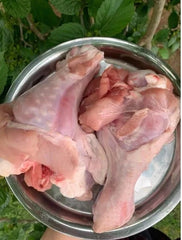 Raw bones: Raw bones can help scrape away plaque and tartar from your dog's teeth. However, it's important to choose the right size and type of bone to prevent any choking or dental damage. Consult your veterinarian for recommendations.
Raw bones: Raw bones can help scrape away plaque and tartar from your dog's teeth. However, it's important to choose the right size and type of bone to prevent any choking or dental damage. Consult your veterinarian for recommendations.
Water and foof additives: There are water additives available that can be added to your dog's drinking water to help reduce plaque and tartar buildup. These additives are tasteless and safe for ingestion. We have seen results with Troy Plaque Off Chew for dogs, one chew a Dog day. This is very effective at removing plaque, keeping gums healthy and maintaining fresh breath in your dog.
 It's important to note that while natural remedies can be beneficial, they should not replace regular dental care. Always consult your veterinarian before incorporating any new remedies into your dog's routine.
It's important to note that while natural remedies can be beneficial, they should not replace regular dental care. Always consult your veterinarian before incorporating any new remedies into your dog's routine.
Maintaining your dog's oral hygiene is essential for their overall health and well-being. By implementing the techniques discussed in this guide, you can ensure your furry friend has a healthy and happy smile. Regular brushing, choosing the right toothbrush and toothpaste, incorporating alternative oral hygiene options, dental food formulas and scheduling regular dental check-ups and professional cleanings are all key steps in maintaining your dog's oral health. Additionally, natural products can provide an extra boost to their oral hygiene routine. Remember, prevention is always better than cure, so start early and establish a dental care routine for your dog. With your dedication and the right tools, you can keep your four-legged friend's teeth and gums in top-notch condition. So, embrace these proven techniques and start barking up the right tree for your dog's dental care!
© weknowpets 2024


